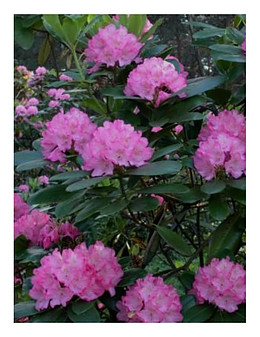
The Rhododendrons are one of the most beautiful and attractive plants in many landscapes. It’s a common shrub in most landscapes with beautiful flowers.
Although rhododendron doesn’t require much pruning, especially those in naturalized settings, nonetheless, they respond well to occasional pruning. Rhododendrons are mostly trimmed to maintain, keep in shape and rejuvenate.
Before we continue with this article, let’s quickly look at what it means to prune for shape and rejuvenation.
Pruning for Shape
Shaping in this context means to change the shape of the plant for any reason. It could be to enhance denser branches or to control plant growth (height and width). The shaping of rhododendron is aimed at developing an appealing aesthetical aspect of the plant.
Shaping of the plant should be done during late winter (more on this later) when the plant is still dormant.
Rejuvenation Pruning
This pruning approach is targeted at cutting off dead, overgrown, and unattractive wood. Rejuvenation pruning helps to get rid of most branches of rhododendron, which facilitate the growth of new growth from old stems.
Rejuvenation pruning can also be done by cutting the entire rhododendron to around 6 inches of the ground. This method seems easy, but most rhododendrons rarely survive it.
This treatment is a bit harsh and can lead to the death of your plant, especially if it is weakened by poor nutrition or disease.
You can opt for any of the above pruning methods that suit your purpose. It would make your plant more healthy and attractive. Let’s talk more about pruning.
Timing Your Pruning
1. Prune Your Rhododendrons During Winters for Large Cuts
It is best to shear rhododendrons during winter. At this period, the plant is dormant, which makes pruning way easier. So winter is the best time to prune your rhododendrons if you want new and better growth after the trimming.
By all means, avoid pruning during a freeze. This is because: the cut branches are susceptible to get frozen from the severe cold, which may damage the plant.
2. Prune Immediately After a Bloom to Promote New Flowers
If you want your rhododendrons to produce new flowers next season, it is recommended that you shear your rhododendrons after they finished blooming. This should be in late spring or the beginning of summer.
You can also prune whenever you notice that the flowers are dying with less or no new growth.
A good time to cut flowers from your rhododendrons is during mid-spring. During this period, the plants are at their peak of producing beautiful flowers. So, it won’t hurt the plant’s growth.
3. Prune before the Blooming Season
This pruning practice helps your plant to grow taller and larger. When you prune during early spring or late winter, it helps your plant to produce fewer flowers. This is ideal for your rhododendrons and makes them expand well.
It helps your plant to channel its energy into growing bigger branches and leaves rather than using it to produce flowers. Rhododendrons are known to produce beautiful flowers, so it’s okay to leave those flowers on your plant for a short while before cutting off some.

Styles of Pruning
1. For a Low-maintenance Prune: Cut off Dead Flowers and Woods
Use a pruning shear to trim any dead parts of your rhododendron. You can also remove parts that show signs of dying. Dead leaves look brown or yellow, while dead branches are crispy and snap easily.
Getting rid of any dead or dying parts helps clean up the overall look of the plant. It also helps the plant to conserve and utilize its energy for the proper growth of the living parts.
This type of pruning needs to be carried out once a year or anytime your rhododendron needs it. Furthermore, cutting off dead parts from your rhododendron also helps to encourage a more landscape and natural look for your plant.
2. Control Your Plant’s Growth by Pruning a Shape into It
You can prune your plant to grow in any direction of your choice by cutting off some parts and leaving other parts. For instance, you may leave the parts you want to appear bigger and make the other part smaller.
This cutting technique is suitable for rhododendrons that are close to your house, or you simply want to maintain a uniform pattern.
Note that rhododendron may not give you the perfect shape you desired because the plant has long branches and broad leaves. Pruning of this nature should be done just once a year.
Trimming Your Plant
1. Choose a Pruning Tool Based on Your Rhododendron’s Size
Not all tools are suitable for different sizes of rhododendron. For a plant that is well established, a chainsaw would be suitable to cut the plant. It can easily cut through the middle of the plant and also the large woody branches.
Pruning shear and handsaw is suitable for cutting rhododendron with smaller and fewer branches. You can also use it when cutting smaller parts of the plant.
Care should be taken when handling the tools as they can be dangerous if not properly handled. Always refer to the manual for operating instruction before using any tool, and follow the safety measures.
2. Cut Your Rhododendron Branches Straight and Avoid Bending It
When cutting your rhododendron, avoid breaking or bending the branches. Instead, cut the branches in a straight and even manner.
The aim here is to minimize any potential damage that would be caused by cutting. It also helps to prevent your plant from dying through shock.
You can cut any part of the plant during pruning; it won’t affect your rhododendron. Nonetheless, you may have to check for buds parts of the plant if you want to avoid cutting the flowers.
Dead branches of your plant can be broken off; your plant won’t be hurt because the parts are already dead.
3. Tidy Up Leaves and Excess Branches After Pruning
Clean up the entire space after working to prevent any form of injury caused by leaves or branches on the ground.
Cleaning also helps your rhododendron to look neat and organize. Gather all leaves and branches on the ground into a yard debris bin.
Conclusion
Plants like rhododendrons can sometimes be complicated to maintain; you can hire a professional if you can’t take care of your rhododendron.
Thank you for visiting here on my website and reading this article. If you have some questions or something that you want to share herewith, please kindly leave your comment below, and I’ll be happy to write back to you.

John W Cortenbach
I enjoyed reading your article about taking care of our Rhododendron plants. I hope to buy some for my self with my fruit garden. Thank you for sharing. Visit my website coming up selecting ingredients to grow in our gardens.
John
I enjoy reading your article about pruning rhododendron plants. I like the content following your guidelines with effective headers to categorize your topic and effectively keep the plant healthy during the seasons. I am a gardener myself. I have grown multiple fruits and vegetables in my backyard. The experience of working with a plant is a responsibility, and I always like visiting sites that share a passion for gardening. Thank you for sharing.
admin
Hello John,
Thank you so much for your kind visit to my Site. And reading my article about Guide to Pruning Rhododendron plants. I’m glad that you understand what I’m writing here. And I’m happy to know that you are a gardener too. So easily apply these guides.
Thank you and best wishes,
Joyce